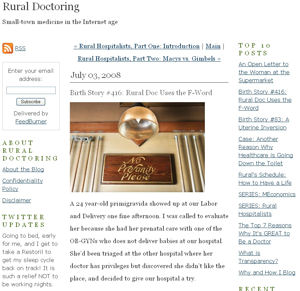Improving your patient's health without hurting the planet
As evidence mounts about the effects of environmental degradation on all patients' health, many physicians are making simple and environmentally friendly changes to their practices.
When pediatrician Larry Rosen, MD, decided to “green” his medical practice, he went all out, founding a new office in Oradell, N.J., and completely renovating the 4,000-square-foot space to be environmentally friendly.
In his recently opened office, the cabinets contain no formaldehyde and the paint on the walls is free of volatile organic compounds. Ceiling tiles, lighting fixtures, carpeting and waiting room furniture were selected to minimize their environmental impact.

“Essentially, it's creating a healthy space that mirrors what we're trying to teach parents,” said Dr. Rosen. “I have become convinced that the environment plays a crucial role in children's health.”
As evidence mounts about the effects of environmental degradation on all patients' health, many physicians are coming to share Dr. Rosen's concern, although most do not have the energy or opportunity to make such far-reaching changes to their practices.
That's OK, said Joel Kreisberg, DC, founder of the Teleosis Institute, a nonprofit firm that promotes sustainable health care. “It's an overwhelming task if you try to reinvent the system. If you just try to save 5% or 10%, it's really easy and most people feel really good about it.”
Dr. Kreisberg and other experts offered a number of suggestions on how physicians and other health care providers can easily make their practice a little greener.
Recycle. Paper recycling can be more complicated for a medical office, noted Janet Brown, director of sustainable operations for Practice Greenhealth, a nonprofit environmental health care company.
“The physician practice has to consider the confidentiality of that material,” she said. It's best to contract with a recycling vendor who will come in and pick up paper directly from your practice, so that confidential material is not mixed in with general building waste.
It pays to be picky about your recycling contractor to ensure that potentially hazardous materials, like old computers, are disposed of properly. Recyclers might ship computers to third-world countries where they're burned in open fires. Web sites like ban.org provide guidance on selecting a responsible recycler. Ms. Brown also suggested that practices buy as much recycled material as possible, including not just copy paper, but exam table covers, paper towels, toilet paper, file folders and notebooks.
Switch to green cleaning supplies. Minimize the use of environmentally harsh disinfectants. Use hospital-grade disinfectant on critical areas, Ms. Brown advised, but use less toxic cleaners on glass, floors and bathrooms. Don't overuse high-level, cold disinfectants, like Cidex, which damages equipment over a long period of time, she said. Disinfectants should be used only for the time and in the manner specified on the container.
Limit red-bag waste. “One of the simplest things is separating one's waste stream. Way too much stuff goes in the red-bag waste,” said Dr. Kreisberg. Teaching staff what really needs to go into the red bags is the first step, but just having fewer of them around—only in procedure rooms, not regular exam rooms, for example—also reduces overuse, Ms. Brown said.
Most of what is inappropriately placed in red bags can go in regular trash, but some things actually require more careful handling. “Broken thermometers people think you can put in the sharps container because they're glass,” said Ms. Brown.
However, because medical waste is incinerated, the red bag is one of the worst places to dispose of mercury, and medical incinerators are a major source of mercury in the environment. To avoid that problem, Ms. Brown recommended practices consider going mercury-free, and replace any mercury-containing devices that are being used to measure temperature or blood pressure.
Replace old equipment. Consider replacing old computers, vaccine fridges and other appliances with newer models using less electricity. The cost-saving aspects of greening usually recoup the initial financial investment, the experts said. There's also the marketing potential of being a green office.
“Patients really like it,” said Dr. Kreisberg. “It's kind of a win-win for the patients, the community and the medical staff and clinic.”
Not to mention the earth.





